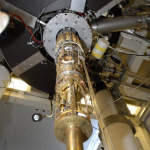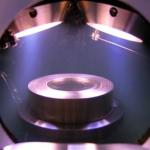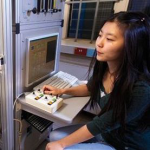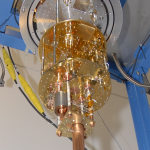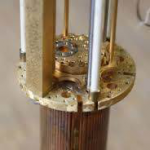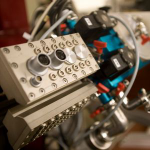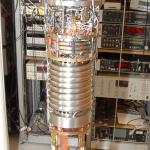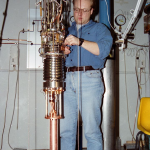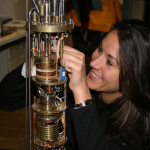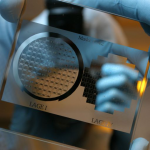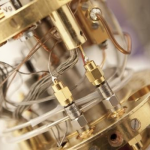Administration of EMP-related Publications
| year | 2020 |
| author(s) | S. Autti, J. T. Mäkinen, J. Rysti, G. E. Volovik, V. V. Zavjalov, V. B. Eltsov |
| title | Exceeding the Landau speed limit with topological Bogoliubov Fermi surfaces |
| document type | Paper |
| source | Phys. Rev. Research 2, 033013 (2020) |
| doi | 10.1103/PhysRevResearch.2.033013 |
| arxiv | https://arxiv.org/abs/2002.11492 |
| EMP/Horizon2020 | This publication does not include a EMP/Horizon2020 acknowledgement. |
| abstract | A common property of topological systems is the appearance of topologically protected zero-energy excitations. In a superconductor or superfluid, such states set the critical velocity of dissipationless flow vcL , proposed by Landau, to zero. We check experimentally whether stable superflow is nevertheless possible in the polar phase of p -wave superfluid 3He , which features a Dirac node line in the energy spectrum of Bogoliubov quasiparticles. The fluid is driven by rotation of the whole cryostat, and superflow breakdown is seen as the appearance of single- or half-quantum vortices. Vortices are detected using the relaxation rate of a Bose-Einstein condensate of magnons, created within the fluid. The superflow in the polar phase is found to be stable up to a finite critical velocity vc ≈ 0.2 cm /s, despite the zero value of the Landau critical velocity. We suggest that the stability of the superflow above v cL but below v c is provided by the accumulation of the flow-induced quasiparticles into pockets in the momentum space, bounded by Bogoliubov Fermi surfaces. In the polar phase, this surface has nontrivial topology which includes two pseudo-Weyl points. Vortices forming above the critical velocity are strongly pinned in the confining matrix, used to stabilize the polar phase, and hence stable macroscopic superflow can be maintained even when the external drive is brought to zero. |

